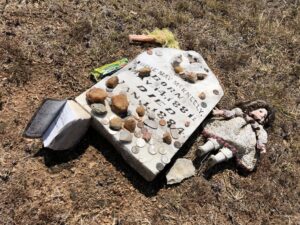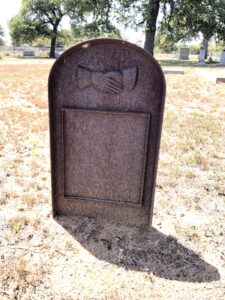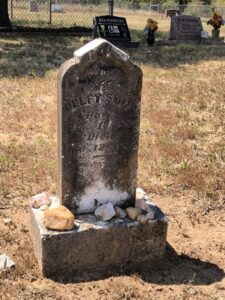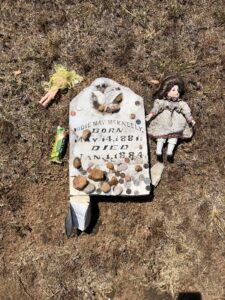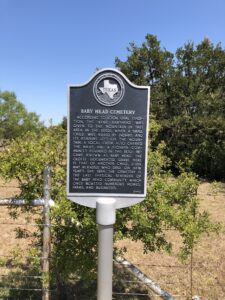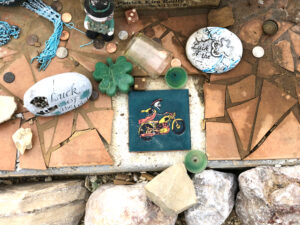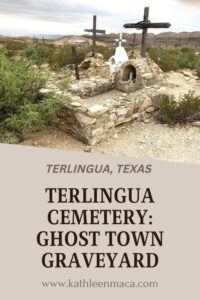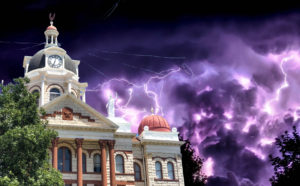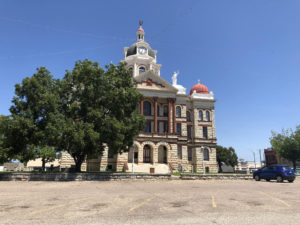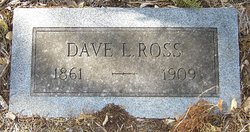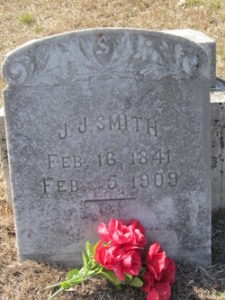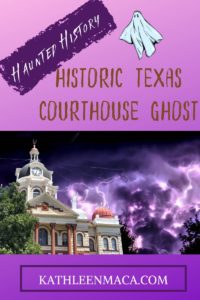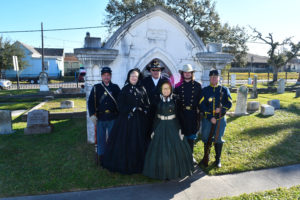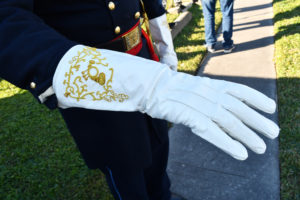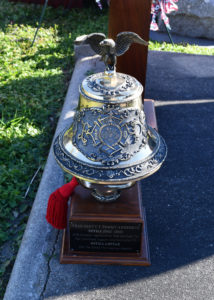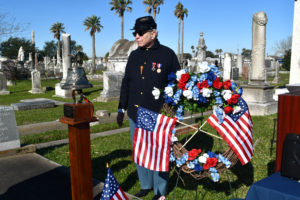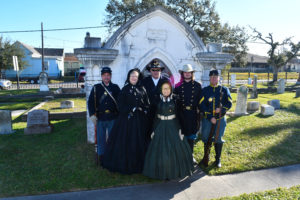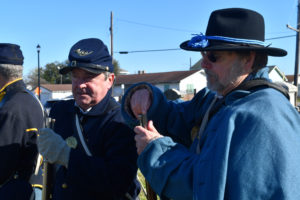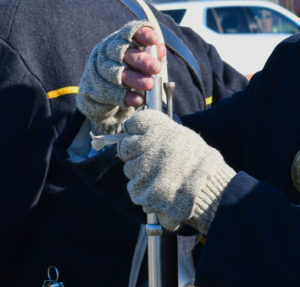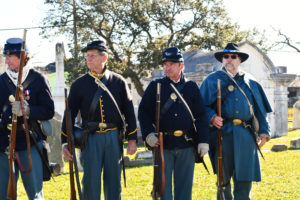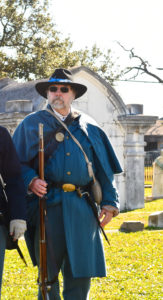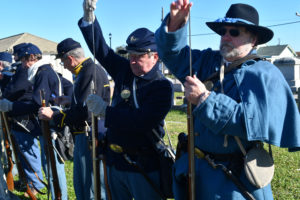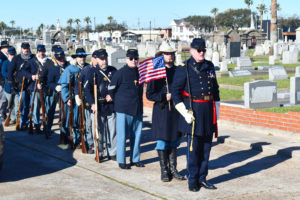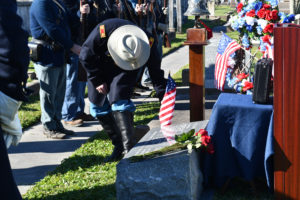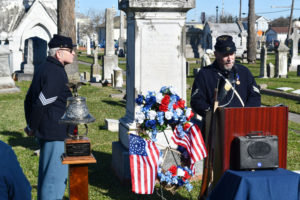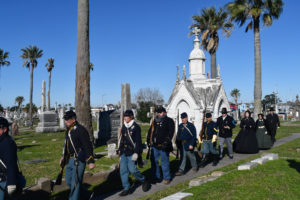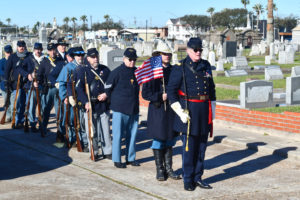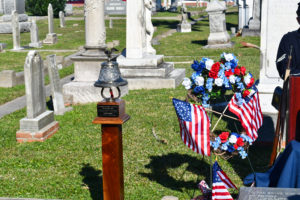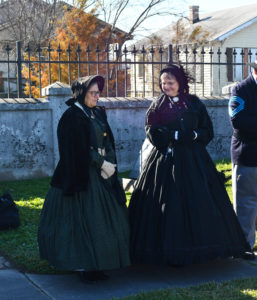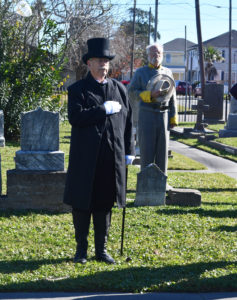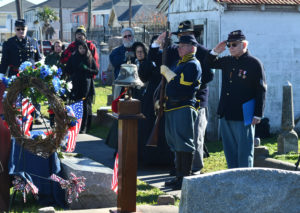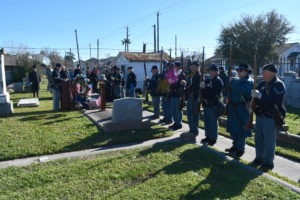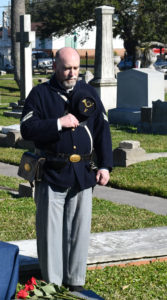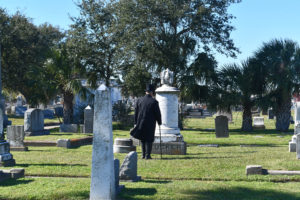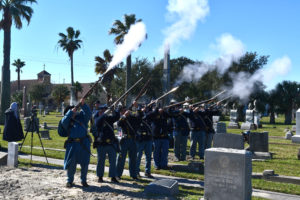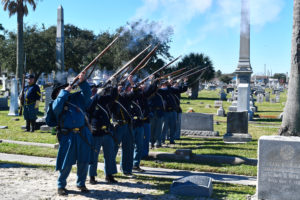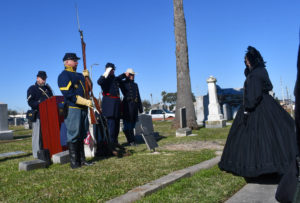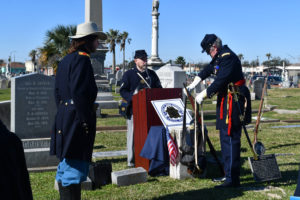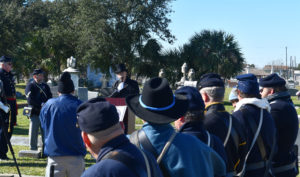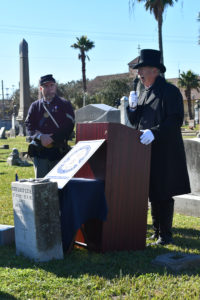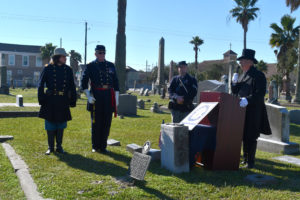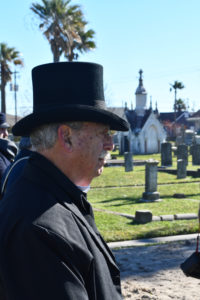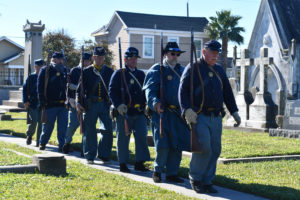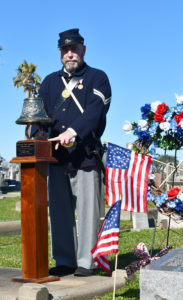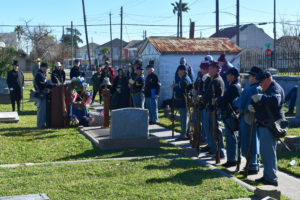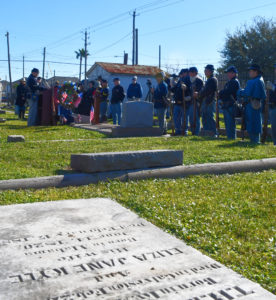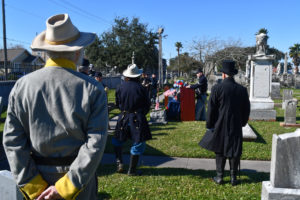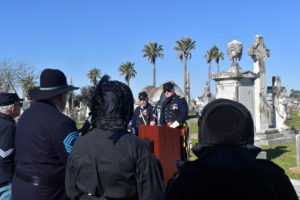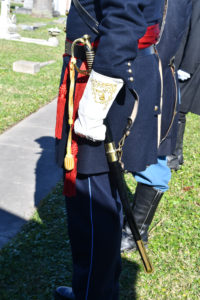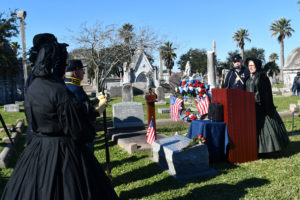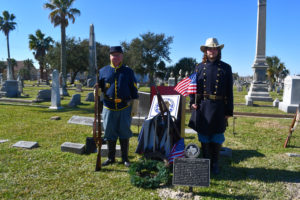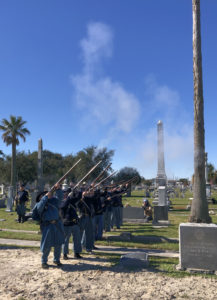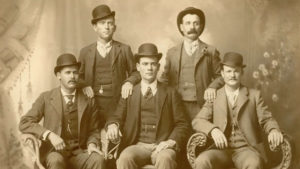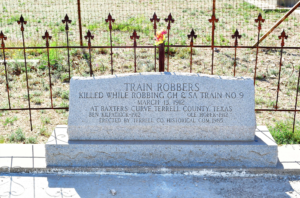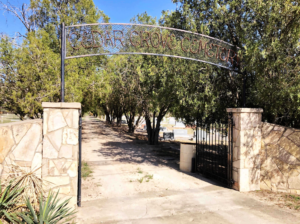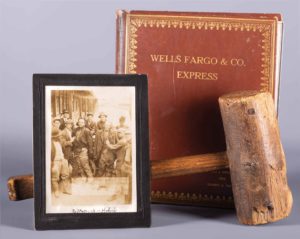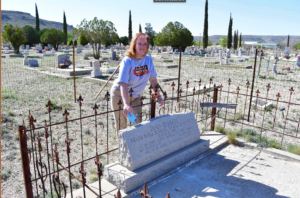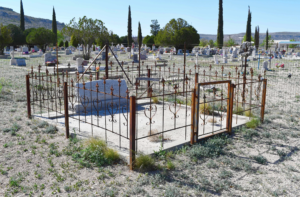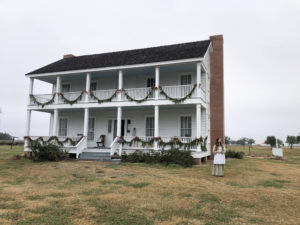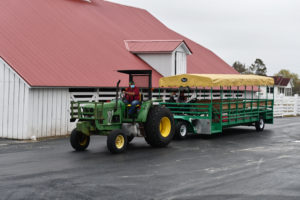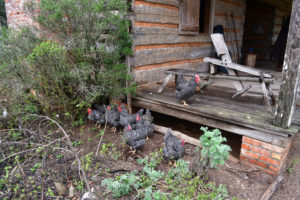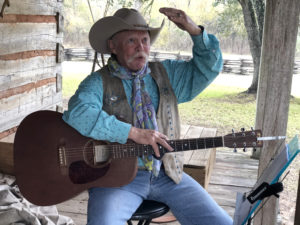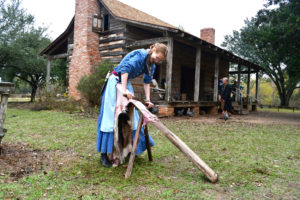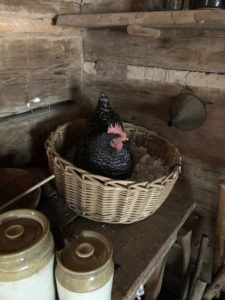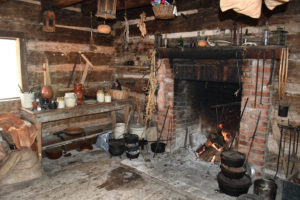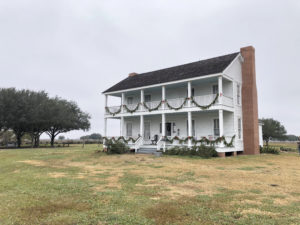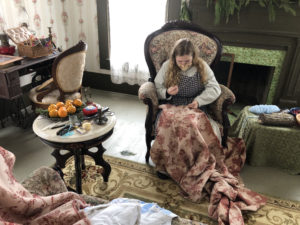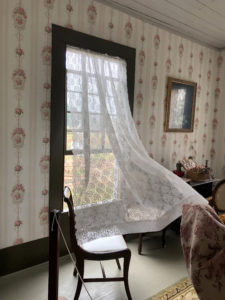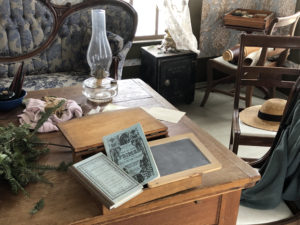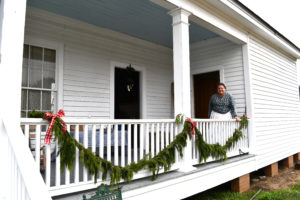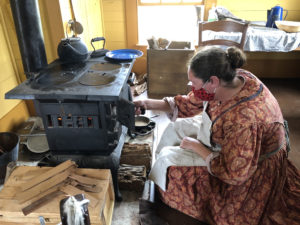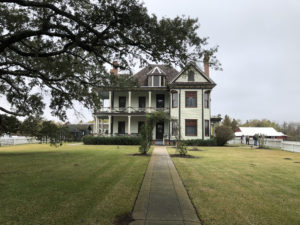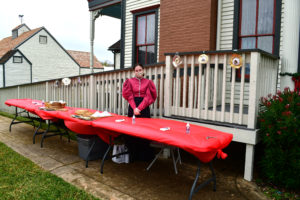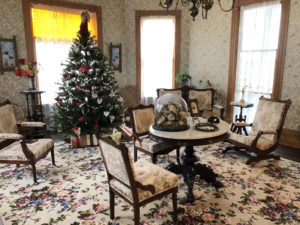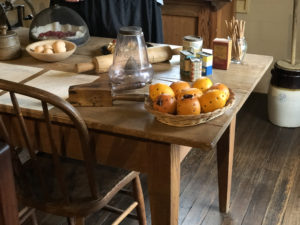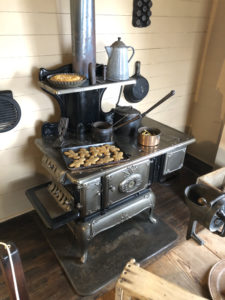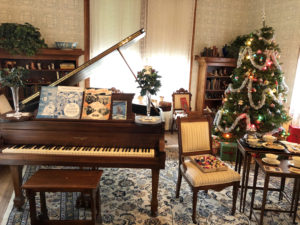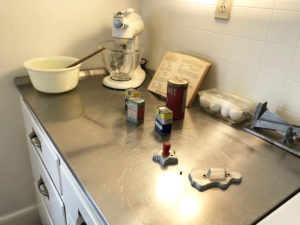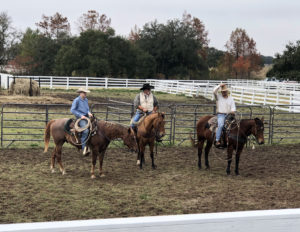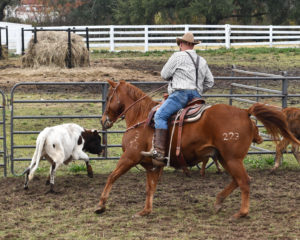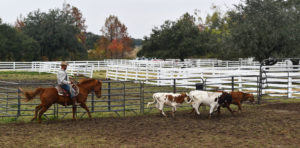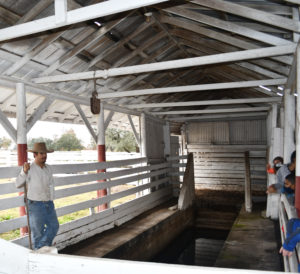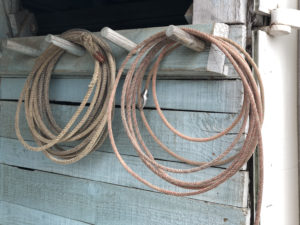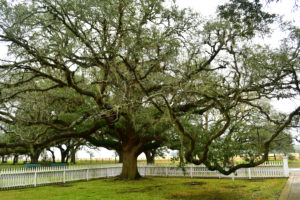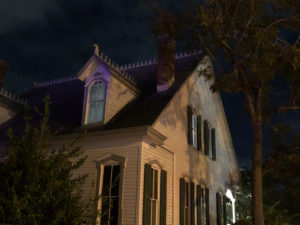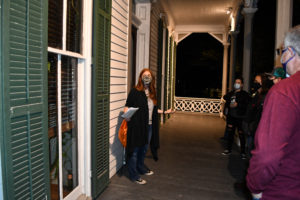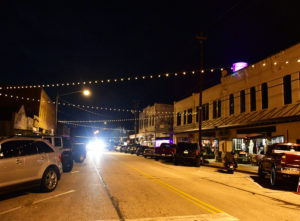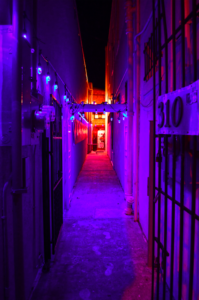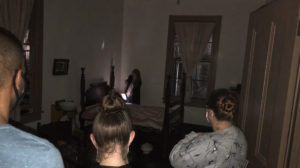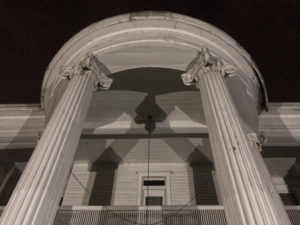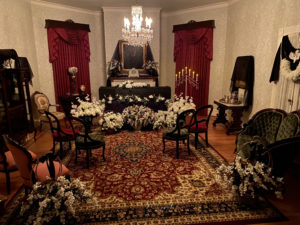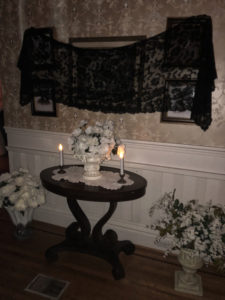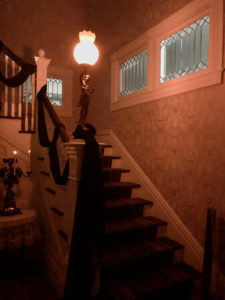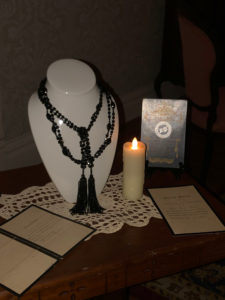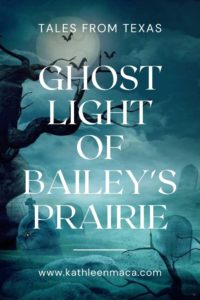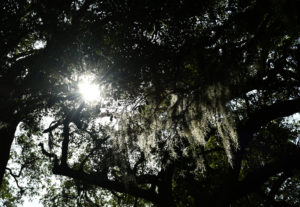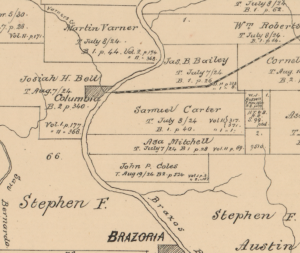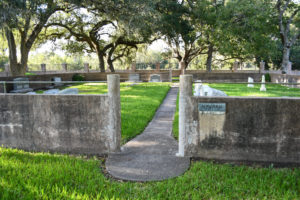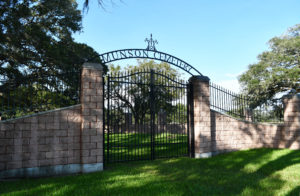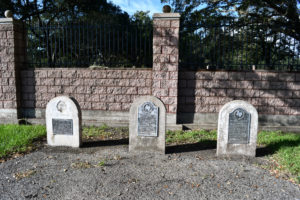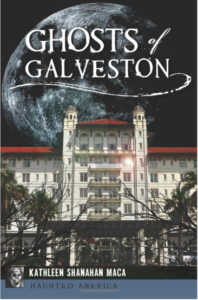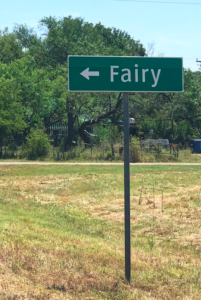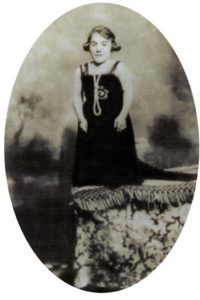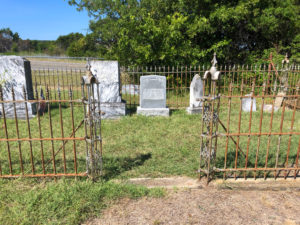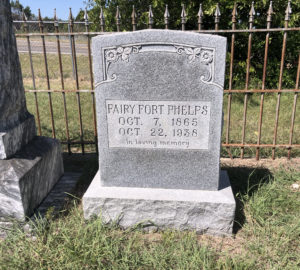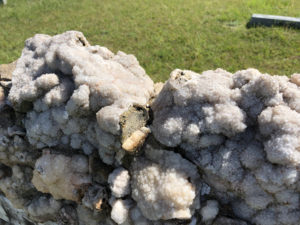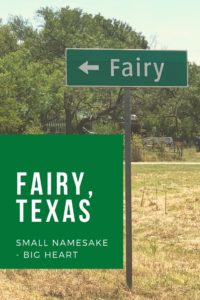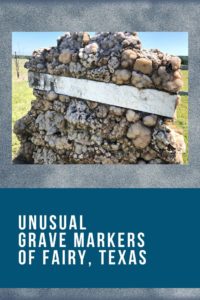Category: Historic Cemeteries
Terlingua Cemetery: Ghost Town Graveyard

Welcome to Terlingua Cemetery, in Terlingua Texas.
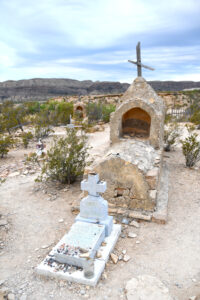 To those who are more accustomed to manicured cemeteries with vast green lawns, this place appears to be abandoned, but Terlingua cemetery is still in use today.
To those who are more accustomed to manicured cemeteries with vast green lawns, this place appears to be abandoned, but Terlingua cemetery is still in use today.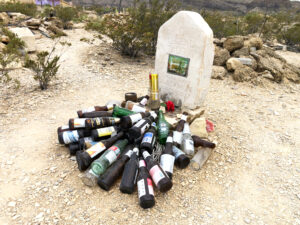
It’s one of the most photographed graveyards in the state of Texas, which should come as no surprise.
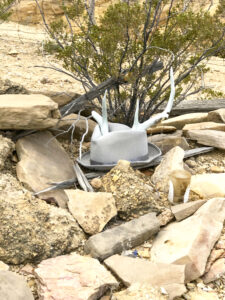 I’ve wanted to visit this amazing burial ground since I was a child, so to have the opportunity to roam through it – left alone with my thoughts and wonder about those who rest here – was a true privilege. There are the well-known, the unknown and the surprise of finding the grave of someone I knew personally in college. It was an astounding experience.
I’ve wanted to visit this amazing burial ground since I was a child, so to have the opportunity to roam through it – left alone with my thoughts and wonder about those who rest here – was a true privilege. There are the well-known, the unknown and the surprise of finding the grave of someone I knew personally in college. It was an astounding experience.
Terlingua was one of the most remote areas in North America at the time it was founded. It still remains set apart from more populated areas.
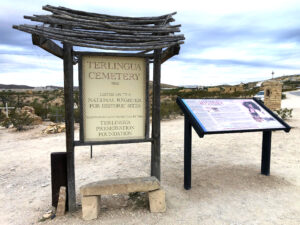 The cemetery encompasses one acre in the Terlingua Ghost Town – which isn’t really a ghost town at all. True . . . the town used to be the site of a quicksilver mining camp and place where desert folk called home beginning in the 1880s, but it’s now more of an artist community and a low key tourist base for visiting Big Bend National Park.
The cemetery encompasses one acre in the Terlingua Ghost Town – which isn’t really a ghost town at all. True . . . the town used to be the site of a quicksilver mining camp and place where desert folk called home beginning in the 1880s, but it’s now more of an artist community and a low key tourist base for visiting Big Bend National Park.
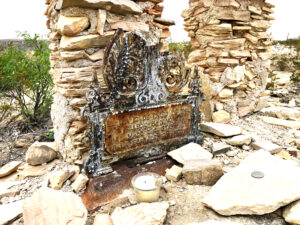 Marked graves date back to 1903, but burials began back when the dangerous process of mercury mining began here. Mine collapses, mercury poisoning and later influeza and tuberculosis epidemics populated the cemetery.
Marked graves date back to 1903, but burials began back when the dangerous process of mercury mining began here. Mine collapses, mercury poisoning and later influeza and tuberculosis epidemics populated the cemetery.
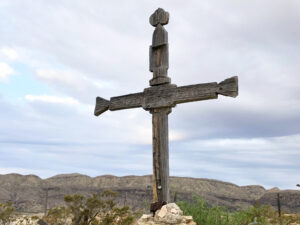 Conservative estimates say that there are about 400 burials in the cemetery: Men, women, and children. Miners, goat herders, artists, housewives, ranch hands, cooks, bootleggers, day laborers, war veterans, clergy, even murder victims. About 90 percent of those who rest here are of Hispanic heritage.
Conservative estimates say that there are about 400 burials in the cemetery: Men, women, and children. Miners, goat herders, artists, housewives, ranch hands, cooks, bootleggers, day laborers, war veterans, clergy, even murder victims. About 90 percent of those who rest here are of Hispanic heritage.
Those that were victims of mining accidents were sometimes laid to rest in coffins made by the companies they worked for.
Many of the gravesites have lost their markers, or they have simply become illegible over time. Some have all but vanished due to relentless weather and relic hunters.
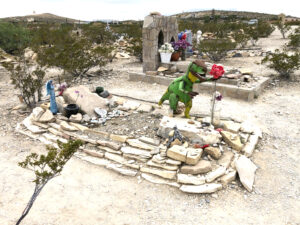 Others reflect the character and sometimes humor of those who they remember. A Hobbit hole, a metal T-Rex, and epitaph of “Another good man done gone.” They all lure visitors into slowing down to take in the silent stories of the cemetery.
Others reflect the character and sometimes humor of those who they remember. A Hobbit hole, a metal T-Rex, and epitaph of “Another good man done gone.” They all lure visitors into slowing down to take in the silent stories of the cemetery.
The Mining town was abandoned in the 1940s. That’s when Terlingua became a true ghost town . . . years before it became home to artists and others who tired of life in overcrowded communities . . . and eventually the visits of countless curious tourists on their way to Big Bend.
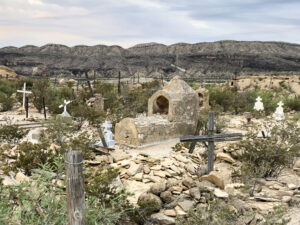 Visitors are fascinated by the variety of burial markers and folk art memorials, and of course – the stunning View of Chisos Mountains and Sierra del Carmens as a backdrop.
Visitors are fascinated by the variety of burial markers and folk art memorials, and of course – the stunning View of Chisos Mountains and Sierra del Carmens as a backdrop.
Each year an elaborate celebration takes place here to mark Dia de los Muertos, or Day of the Dead, giving the living a chance to honor and remember the departed.
Walking into Terlingua cemetery is like walking into a time warp. If a visit to this fascinating place doesn’t make a person stop and reflect . . . I’m not sure what would.
Join me for a stroll through the grounds of this historic cemetery in my Youtube video of the cemetery HERE.
Historic Texas Courthouse Ghost Linked to Murders
I was considering what my first October post should be this year . . . a ghost story, a fascinating “story behind the stones” of old cemeteries, a thrilling story from Texas history, or a historic site. Why not all of the above? If you travel to Coryell County, it’s all in one place.
Workers at the Coryell County Courthouse in Gatesville have felt an ‘other-worldly’ presence for years: cold breezes through the county clerk’s office, an occasional firm tap on the shoulder and even furniture being re-arranged in the middle of the night. Locals have dubbed the courtly ghost ‘Elroy’ because they aren’t certain who it actually is. But there are theories that the spirit can’t leave the courthouse because of a connection to a sensational 1909 murder right in the courtroom.
It happened over 100 years ago.
In 1908 a 19-year-old young woman named Verna Mabel Ware was assaulted by a 20-year-old-man named John J. Hanes in the Gatesville area. It was alleged that Hanes – reportedly studying pharmacy – drugged chocolates he gave to the girl at a spring picnic and then took advantage of her, resulting in the birth of a child.
He was charged with seduction, as the word ‘rape’ wasn’t used at the time because it was thought to be too harsh.
Hanes reportedly had several male friends lie on the witness stand during his trail.
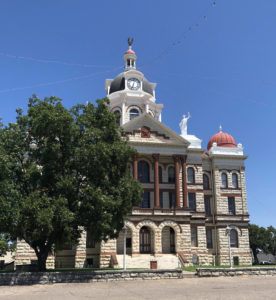 It’s apparent that the behavior wasn’t unusual at the time, because before his own trial proceedings were finished he sat in the courtroom on February 2, 1909 watching another man named Wiley Mulhouse who was being prosecuted on the same charge. Because the jail was in the basement then, Hanes would have been returning to his cell at the end of the day. The two trials had split the town into separate contentious sides.
It’s apparent that the behavior wasn’t unusual at the time, because before his own trial proceedings were finished he sat in the courtroom on February 2, 1909 watching another man named Wiley Mulhouse who was being prosecuted on the same charge. Because the jail was in the basement then, Hanes would have been returning to his cell at the end of the day. The two trials had split the town into separate contentious sides.
Both Ware and Hanes came from respected farming families in the area and had many friends.
Verna, distraught with her situation, stood in the rotunda with her brother Ezra looking through the plate glass window that separated them from the courtroom. Fearing she would never see justice, she decided to take action herself.
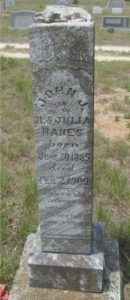 She pulled a 38 caliber revolver from her purse and shot through the glass, hitting Hanes three times in the back. He died instantly. As people in the courtroom scattered, Ware continued to fire hitting James J. Smith (age 68) in the head, Dave Ross (age 48) in the arm and back and A. P. Wiley, Jr. in the leg. Only Wiley would survive his wounds.
She pulled a 38 caliber revolver from her purse and shot through the glass, hitting Hanes three times in the back. He died instantly. As people in the courtroom scattered, Ware continued to fire hitting James J. Smith (age 68) in the head, Dave Ross (age 48) in the arm and back and A. P. Wiley, Jr. in the leg. Only Wiley would survive his wounds.
Initial newspaper accounts reported that the three other wounded men were merely spectators in the courtroom, but local lore hints that they may have been character witnesses for Hanes.
Judge Arnold maintained composure during the incident and directed officials to take Ware downstairs to the jail. Physicians who visited her in her cell declared that she was in a “critical condition of nervous collapse.”
After a few days in jail formal charges were made of three counts of murder and one for carrying a pistol. Her bond was set at $7,500, and was paid by citizens of the community who sympathized with Ware and her situation.
The trail began late in 1909 and continued until February when she was declared not guilty due to temporary insanity. Reporters wrote that at times during the proceedings the jury and spectators were moved to tears. She did have to pay a fine for having the gun, however.
 So who is the courthouse ghost? Perhaps it is Hanes who was positive he would get away with his transgression, and now is trapped in the courthouse. Perhaps it’s the spirit of someone else. We may not ever know for sure.
So who is the courthouse ghost? Perhaps it is Hanes who was positive he would get away with his transgression, and now is trapped in the courthouse. Perhaps it’s the spirit of someone else. We may not ever know for sure.
But if you visit the Coryell courthouse, be prepared to feel an unseasonable chill in the air.
Now, I’m curious…are you more likely to visit the courthouse because of it’s beauty, or because of its ghost?
Incidentally….
-
The jury for the Mulhouse case returned a few days later and returned a guilty verdict with a sentence of two years.
-
The three shooting victims are buried in area cemeteries, with nothing on their markers to denote their newsworthy demises.
-
In the 1990s a local artist even depicted the courthouse in an oil painting with a shadowy figure peering out of a second floor window over Main Street.
-
The year after her trial, Verna Ware married W.R. Eck who adopted her daughter Opal. He unfortunately passed away in 1918.
-
Ware remarried, but it didn’t last. She and Opal moved to Utah were Verna passed away in a rest home in 1973.
-
And the courthouse? It’s well worth visiting with or without the ghost in attendance. The Beaux Arts beauty was built in 1897-1898 of red and white sandstone from a design of architect Wesley Clark Dodson.
Battle of Galveston Commemoration 2022
It was a brisk morning on Saturday, but luckily the sun was shining for the annual commemoration ceremony at Galveston’s Trinity Episcopal Cemtery for those lost in the Battle of Galveston. The event was hosted by the Edward Lea Camp of the Sons of Union Veterans of the Civil War. Thank you to everyone who came from near and far to attend.
The ceremony takes place each January and is free for the public to attend. You can find out more about Edward Lea, the naval officer whose marker the event centers around HERE.
The following are some photos from yesterday’s ceremony.
Searching for Outlaws in Sanderson
Have you ever search for an outlaw while on a vacation? They can be found in the most unexpected places, and it might not be as dangerous as it sounds.
If you recognize this famous photo, you might just be an Old West enthusiast like I am! It’s Butch Cassidy (bottom right), the Sundance Kid (bottom left) and the Wild Bunch, and is known as the “Fort Worth Five” photo.
That fellow sitting in the middle – known as “The Tall Texan” – was the subject of my search in Sanderson, Texas. He was a handsome guy, but didn’t always make good choices.
Ben Kilpatrick was born just east of San Angelo in 1874. He worked as a cowboy for several years before he became acquainted with Texas outlaws Sam and Tom Ketchum, and ended up riding with the Ketchum Gang.
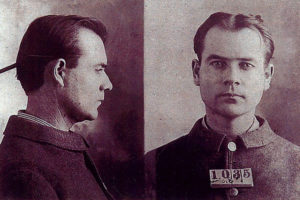 After a failed train robbery that ended in several of the members being caught, Kilpatrick fled to Robber’s Roost in Utah and joined the Wild Bunch. After some success, he and his girlfriend Laura Bullion made their way to St, Louis where they were arrested. Kilpatrick was seated to 15 years in prison for robbery, and Laura was sentence to five. After serving 31/2 years she was released, and went to Tennessee under an assumed name to make a new life.
After a failed train robbery that ended in several of the members being caught, Kilpatrick fled to Robber’s Roost in Utah and joined the Wild Bunch. After some success, he and his girlfriend Laura Bullion made their way to St, Louis where they were arrested. Kilpatrick was seated to 15 years in prison for robbery, and Laura was sentence to five. After serving 31/2 years she was released, and went to Tennessee under an assumed name to make a new life.
Kilpatrick, on the other hand, was released after 10 years and went immediately back to a life of crime. Bad decision…
Train number 7 of the Galveston, Harrisburg & San Antonio Railroad pulled out of Del Rio on the evening of March 12, 1912. It made a brief stop for water in Dryden, but as it pulled away from the station Kilpatrick and Ole Hobek ( a friend from his prison days) jumped aboard.
The masked robbers ordered the engineer to go to the first iron bridge east of Baxter’s Curve, about halfway to Sanderson. Once there the bandits ordered the train to stop and the passenger cars and caboose uncoupled from the engine, mail and baggage cars.
Leaving the passengers behind, they ordered the engine across the bridge and about a mile down the tracks, where the robbers had staged horses for their getaway.
Hobek kept a gun on the engineer while Kilpatrick went back to the baggage car with Wells Fargo Express agent David Trousdale. As they were making their way to the back of the car, Trousdale picked up a mallet from a shipment of frozen oysters and hid it in his clothing. (Frozen oysters…who would have thought THAT would be on the train?!)
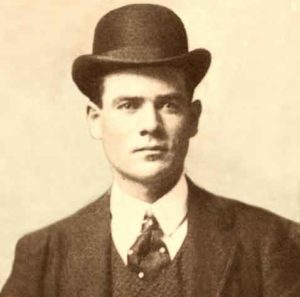 Kilpatrick was so busy filling a bag with $60,000 he didn’t see Trousdale sneak up to hit him over the head with the mallet. (Ouch!) The outlaw was killed with the one blow. Trousdale took the bandit’s gun and returned to the engine where he shot and killed Hobek just after midnight.
Kilpatrick was so busy filling a bag with $60,000 he didn’t see Trousdale sneak up to hit him over the head with the mallet. (Ouch!) The outlaw was killed with the one blow. Trousdale took the bandit’s gun and returned to the engine where he shot and killed Hobek just after midnight.
With the threat ended, the engineer backed up the train, re-coupled the passenger cars and proceeded to Sanderson.
The dead train robbers were held up for photographs, and later buried in a joint grave at Cedar Grove Cemetery in Sanderson. Trousdale, of course, was rewarded for his bravery.
Now known as the Baxter’s Curve Train Robbery (or the Sanderson Train Robbery), it was one of the last train robberies in the state.
In 2019, the mallet used in the incident, a photo of the dead bandits and the Wells Fargo accounts were sold at auction in Arizona for $64,900. It’s a bit ironic how close that amount is to the amount that the robber’s might have gotten away with, had there not been a quick thinking agent on board.
The train robbers’ grave was fairly easy to locate, surrounded by a decorative wrought iron fence and gate. The concrete slab that covers the plot was most likely poured in an effort to prevent gruesome souvenir hunters from robbing the grave.
As a taphophile, or someone who studies cemeteries, I’m always amazed at the stories that lie behind the stones if you only take time to investigate!
Christmas at the George Ranch 2020
Ready to peek into Christmas Past, Texas style? Let me take you on a virtual visit to the George Ranch Historical Park in Richmond where they’ve lassoed a wonderful event to share just that!
The annual Christmas at the Ranch event was a bit different this year due to additional safety protocols, but the staff couldn’t have created a more welcoming and fascinating day for their guests.
Founded in 1824, the George Ranch showcases the four homes of four generations of this Texas family, and this time of year they’re dressed up for the season.
My first stop was at the visitor center, where I was provided with a map of the ranch and demonstration schedule. The park is laid out in a mile long loop (yes, a MILE), and visitors can ride a tractor pulled tram from one stop to the next. But I highly suggest combining riding and walking when weather permits, to enjoy the natural surroundings.
I rode the tram to my first stop, the 1830s Jones Stock Farm dog trot cabin, and was greeted by the volunteers dressed in period costumes. The cabin and buildings are replicas of Henry and Nancy Jones’ homestead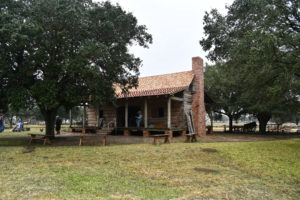 – one of the earliest settlements of Northeast Mexico. Nope, it wasn’t even Texas yet!
– one of the earliest settlements of Northeast Mexico. Nope, it wasn’t even Texas yet!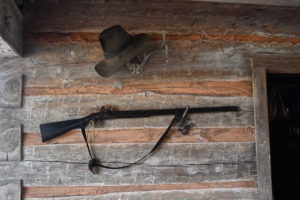
One gentleman shared the background of the family and information about the cabin, and another charmer played beautiful music on his guitar and told a few tall tales that were impossible to resist.
A young woman had the unenviable, sticky task of demonstrating how to clean a deer hide in a yard populated by adorable hens, but managed to do it with a smile while explaining that when the thin hides were worked until thy were translucent, they could be used to cover the cabin windows during the winter months (since glass wouldn’t have been available).
In the breezeway of the dogtrot a young man worked at weaving on a loom, taking breaks to serve visitors Mexican hot cocoa that was brewing over one of the hearth fires – and was a treat on the chilly day.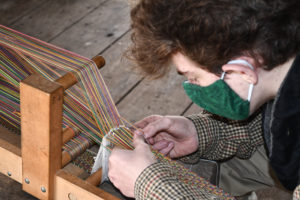
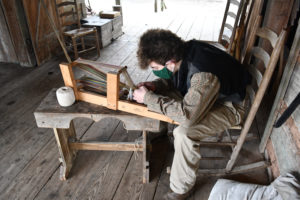
 In the nearby hog pen, one of the volunteers scratched the back of one of the docile 300-pound Berkshire pigs that are part of an initiative to preserve heritage breeds. Seems these fragrant residents are descendants of a rare breed that came to Texas from England in the 1830s. I know people who can’t trace their lineage as well!
In the nearby hog pen, one of the volunteers scratched the back of one of the docile 300-pound Berkshire pigs that are part of an initiative to preserve heritage breeds. Seems these fragrant residents are descendants of a rare breed that came to Texas from England in the 1830s. I know people who can’t trace their lineage as well!
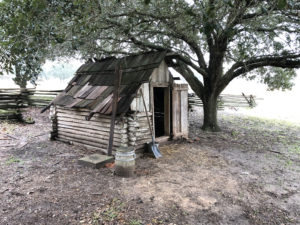 After a quick look at the chicken coop (always interesting to me since gathering the eggs was my job when visiting my grandmother’s farm), smokehouse barn and outdoor kitchen, I worked my way back to the road to hop on the tram again.
After a quick look at the chicken coop (always interesting to me since gathering the eggs was my job when visiting my grandmother’s farm), smokehouse barn and outdoor kitchen, I worked my way back to the road to hop on the tram again.
Next stop: the 1860s Ryon Prairie home – picture perfect with garlands of evergreens draped across the porch rails.
Mary Moore “Polly” Ryon was the oldest of the Jones’ daughters. She inherited th majority of her family’s wealth, and amazingly was on of the largest land holders in the region by age 18! She and her husband William built a cattle ranching empire after the Civil War.
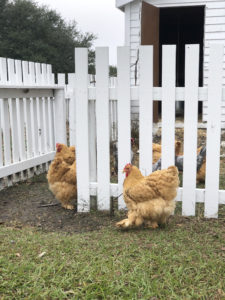
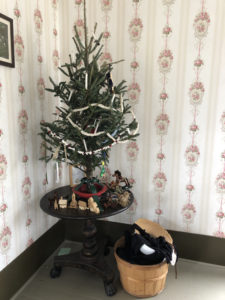 One young woman showed me around the knot garden and chicken coop until it was my turn (social distancing, ya know) to go inside the house.
One young woman showed me around the knot garden and chicken coop until it was my turn (social distancing, ya know) to go inside the house.
Inside two young docents explained the uses of the men’s and women’s parlors, and directed me toward the kitchen where more volunteers were baking cookies for the visitors in a period stove.
I decided to walk the rest of the property rather than ride the tram since it was a beautiful day and I didn’t see any reason to rush.
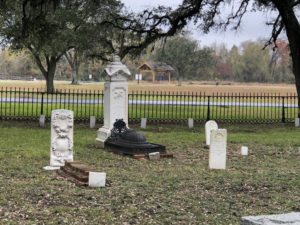 Susan Elizabeth Ryan was Polly’s only surviving child and sole heir of Polly’s estate. She married banker civic leader John Harris Pickens Davis. The Victorian era home sits in a complex that includes a sharecropper’s farm, the family cemetery with graves dating between the 1820s to 1916 and the Oldenberg blacksmith shop. It seemed ironic to me that Polly isn’t in the family cemetery (she’s at Morton Cemetery in Richmond). But the existing monuments are beautiful and well cared for.
Susan Elizabeth Ryan was Polly’s only surviving child and sole heir of Polly’s estate. She married banker civic leader John Harris Pickens Davis. The Victorian era home sits in a complex that includes a sharecropper’s farm, the family cemetery with graves dating between the 1820s to 1916 and the Oldenberg blacksmith shop. It seemed ironic to me that Polly isn’t in the family cemetery (she’s at Morton Cemetery in Richmond). But the existing monuments are beautiful and well cared for. 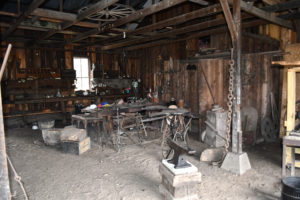
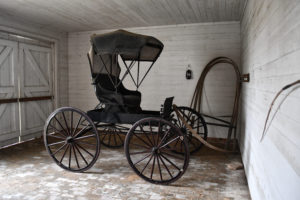 In the blacksmith shop, kids were invited to try their hand at “forging” knives from chunks of clay with rubber mallets.
In the blacksmith shop, kids were invited to try their hand at “forging” knives from chunks of clay with rubber mallets.
In the side yard of the home, a sweet volunteer led visitors in creating Victorian style Christmas ornaments from paper as keepsakes of their visit.
The last home to tour was the 1930s George Ranch House (designed by famous Galveston architect Nicholas Clayton) and complex, where a barbershop quartet was entertaining passersby with Christmas carols.
Mamie George and her husband A.P. were the last descendants of the Henry and Nancy Jones family to oversee the ranching operation. Their influence and support is still seen across the community in libraries, schools, the Houston Livestock Show and Rodeo, a community center and countless other contributions. 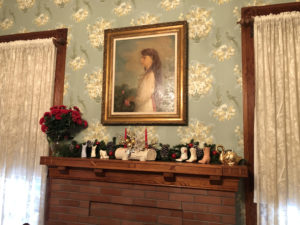
Their home is still decorated with their furnishings, right down to the ornaments on the Christmas tree! I loved Mamie’s collection of ceramic cowboy boots from her travels lined up on the mantle.
Once all of the home tours were checked off of my list, I headed to the arena and barn area for the cattle working demonstrations.
The cowboys demonstrated some basic cutting and lassoing techniques while explaining how and why these things are still down on the working ranch. Afterward, one of the cowboys walked the onlookers over to a dipping vat and related how they were used in the past – and why they aren’t any more (thank heaven!).
Whether you’re looking for a day out by yourself like I was, or for something for the entire family to enjoy together, I highly recommend a visit to the George Ranch. It’s beautiful, fascinating…and you might just pick up a little Texas history along the way.
Roaming with Richmond Ghosts
‘Tis the season for ghostly fun…and boy did we find some in Richmond!
As a cemetery historian and author of a couple of books about cemeteries and ghosts, October is understandably a busy time of the year for me – filled with giving tours and presentations. So it was a special treat last night when my husband and I took time for ourselves to TAKE a ghost tour of the historic district of Richmond, Texas. It’s one I’ve been wanting to see for years, and now I can’t wait to go back with friends next year!
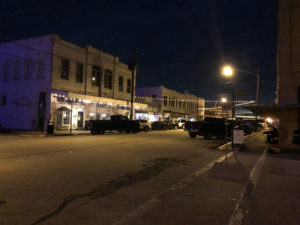 Richmond is filled with history, which usually – in turn – means that through the years tragedi
Richmond is filled with history, which usually – in turn – means that through the years tragedi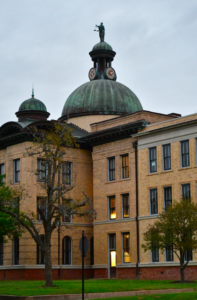 es and unfortunate events have affected the lives of those who lived there. We found out that even the clock tower of the Fort Bend County Courthouse (where we got our marriage license many moons ago) has a story of death and a haunting attached to it.
es and unfortunate events have affected the lives of those who lived there. We found out that even the clock tower of the Fort Bend County Courthouse (where we got our marriage license many moons ago) has a story of death and a haunting attached to it.
We were lucky enough to have Jessica Avery, programs coordinator for the Fort Bend Museum, as our tour guide – assisted by a charming group of other museum employees and volunteers.
One of the things I appreciate about ghost tours organized by historical society groups is that they have a respect for true history as their basis. (Read that as “they don’t just make up a bunch of stories and get their references to history muddled – -I’ve seen that done way too often.) Though the Fort Bend Museum does historical tours of their properties throughout the year so you can learn about the historic aspects of them, their ghost tours focus on the tales and legends associated with the places. So . . . much . . . fun.
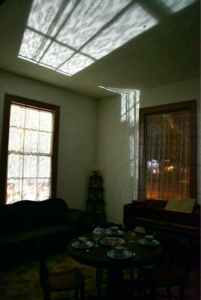 And no, I’m not going to share the stories they worked so hard to gather here. I want you to hear them for yourselves in the spots where they occurred!
And no, I’m not going to share the stories they worked so hard to gather here. I want you to hear them for yourselves in the spots where they occurred! 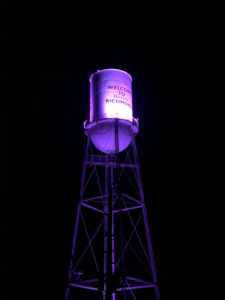
It was an easy-paced walking tour as we followed Jessica through the streets nearby Moore Mansion and into old downtown Rosenberg as she pointed out different sites and shared their stories. Used to documenting with school groups, she has a lovely, clear speaking voice that was easily understandable even over the occasional street noise. The museum staff has visited with local business owners, so they’re able to share their unexplained experiences and sightings as well.
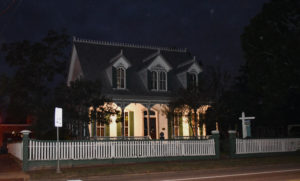 Several charming small buildings that belong to the group such as the McFarlane House are included, and attendees are encouraged to peek inside the windows! Charming by day, certain places with so much past can contain rooms where even the most serious-minded history experts may become so unsettled they have to gather their things and leave when darkness falls.
Several charming small buildings that belong to the group such as the McFarlane House are included, and attendees are encouraged to peek inside the windows! Charming by day, certain places with so much past can contain rooms where even the most serious-minded history experts may become so unsettled they have to gather their things and leave when darkness falls.
One of the properties even has a gravemarker in the front yard. What’s b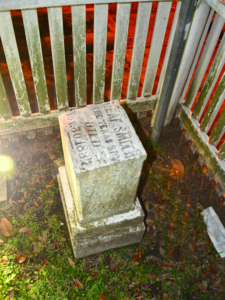 etter is that it belongs to Texas hero Deaf Smith “The Texas Spy!” His name may sound familiar to you if you took Texas history in school. I had no idea such an illustrious person’s commemoration would be found inside the white picket fence of the property. There may even be more unmarked graves beneath the house, which was moved to the property much later.
etter is that it belongs to Texas hero Deaf Smith “The Texas Spy!” His name may sound familiar to you if you took Texas history in school. I had no idea such an illustrious person’s commemoration would be found inside the white picket fence of the property. There may even be more unmarked graves beneath the house, which was moved to the property much later.
Our final stop of the evening was at the fascinating 1883 Moore Mansion, home base for the Fort Bend Museum. And they definitely saved the best for last!
If you haven’t heard it before – but you probably have if you read my blog – funerals “back in the day” were held at home, and the staff had set up an entire Victorian funeral scene in one of the rooms complete with a mounting wreath, coffin, samples of mourning jewelry and announcements, and draped mirrors and pictures. Beautifully done, and very appropriate for the Halloween season.
The house was lit throughout only with battery operated candles and hand held flashlights, which added to the mood. Our guides gave us a tour upstairs and downstairs while telling us some eerily intriguing tales, then let us wander through the large home by ourselves for a bit.
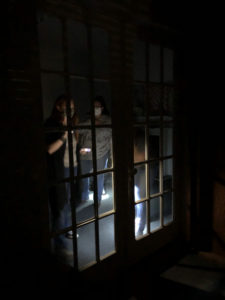
Sign up early – they do sell out. You can choose to do a Halloween tour of the Moore Home or a ghost tour of the area. We chose to do a combo tour of both because . . . who wants to choose?
The Fort Bend Museum has events throughout the year for all ages. You can check the upcoming plans here.
A Ghostly Light on Bailey’s Prairie
A state as big as Texas is bound to have a lot of ghost stories. . . luckily for us!
The first tale I’ll share this October is probably one of the most famous to native Texans, and takes place in Bailey’s Prairie.
If you happen to be motoring south on Highway 35 and see a bouncing orange glow . . . it’s probably Old Brit Bailey in search of his jug of whiskey!
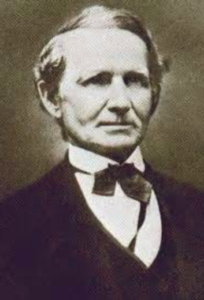 James Briton “Brit” Bailey was more than a real person. He was a real character. Known for his eccentric personality, love of drink and penchant for brawls, life was never dull in his presence. At six feet tall (quite a height for the time), was an imposing figure with his jet-black hair and broad brimmed hat.
James Briton “Brit” Bailey was more than a real person. He was a real character. Known for his eccentric personality, love of drink and penchant for brawls, life was never dull in his presence. At six feet tall (quite a height for the time), was an imposing figure with his jet-black hair and broad brimmed hat.
“Brit” was born in North Carolina on August 1, 1779 in North Carolina. After fighting in the War of 1812 the pioneer came to Texas in 1818 with his second wife, Dot, six children and his slaves, settling in what came to be known as Brazoria County. Several years later Stephen F. Austin would arrive with the “Old Three Hundred” to settle parcels of land in the area.
Not one to pass up a fight or give ground on a cause he believed in, Brit was also a veteran of the Battle of Jones Creek in 1824, and the Battle of Velasco in 1832.
Locals love to share a story about the rowdy rancher that captures his personality. It seems that he shot at a traveling preacher’s feet to watch him dance. After the episode when the men were sharing a drink, the preacher took the opportunity to grab Brit’s gun and m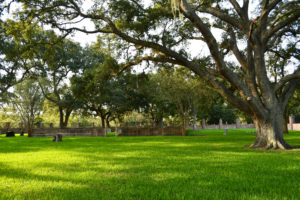 ade the same demand. Roaring with delight, Brit jumped onto a table and energetically danced a jig while onlookers applauded.
ade the same demand. Roaring with delight, Brit jumped onto a table and energetically danced a jig while onlookers applauded.
His temper was as legendary as his humor, and one night he apparently set fire to all the buildings on his own property except the main house.
On December 6, 1832 Brit passed away quietly in his own bed from fever that many think may have been cholera.
Peculiar instructions in his will provided one more surprise for the community. He had requested to be buried standing up (now that took a deep hole!), facing west with his rifle over his shoulder, powder horn by his side, and a jug of whiskey.
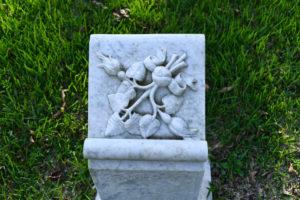 Brit didn’t want anyone passing by his grave saying, “There lies Brit Bailey” and he figured if her was standing up….they couldn’t!
Brit didn’t want anyone passing by his grave saying, “There lies Brit Bailey” and he figured if her was standing up….they couldn’t!
He was buried in a grove near his home and though all his instructions were followed, his jug whiskey was omitted from the coffin. His widow objected to that item, saying he had imbibed enough in his lifetime.
According to legend his ghost in the form of a strange light roams his old homestead at Bailey’s Prairie looking for the lost jug of whiskey. Many describe it as having an orange glow and bobbing around about four to six feet above the ground – the eight a lantern might be held on horseback.
Back when the story originated, it was said that Old Brit searched the prairie every seven years, but either people weren’t paying attention or he’s getting thirstier because now Bailey’s Light is seen on a regular basis.
Naysayers theorize the glow is caused by puffs of natural gas escaping from the ground, but you’ll be hard pressed to convince witnesses of that.
Bailey’s Prairie, Brit Bailey Boulevard (FM 521) and even a local chapter of the DAR are named for this unique figure in Texas history.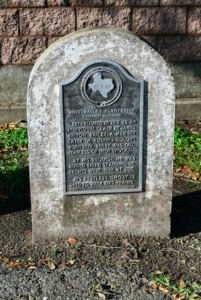
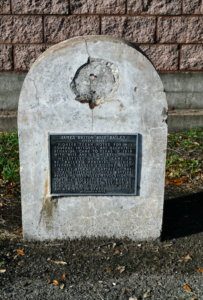
Texas State Historical Markers telling Brit’s story can be found just outside the gates of Munson Cemetery. Unfortunately, someone has vandalized the emblem off of Brit’s marker. (Hope that Brit chased them!)
Are you brave enough to search out Bailey’s Light on a dark night on the prairie?
Subject a real person: Confirmed
Location: Bailey’s Prairie, Brazoria County. Stretch of Highway 35 between Angleton and West Columbia
Best time to see phenomenon: Twilight
For more Texas ghost stories check out
“Ghosts of Galveston,”
available on amazon.com.
Fairy, Texas: A Tiny Legacy with a Big Heart
Driving through Central Texas recently, I made a detour to visit a Fairy . . . and the tiny town named after her.
In a state that likes to brag that “bigger is better,” the town of Fairy Texas in Hamilton County named themselves after a surprisingly diminutive member of their community.
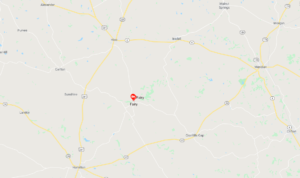 Originally known as Martin’s Gap it was named after James Martin, a settler killed by local Indians in the 1860s while driving cattle through a “gap” between two mountains in the area. He was buried at the foot of one of those mountains.
Originally known as Martin’s Gap it was named after James Martin, a settler killed by local Indians in the 1860s while driving cattle through a “gap” between two mountains in the area. He was buried at the foot of one of those mountains.
As you can see from the map, it isn’t “on the way” to anywhere particularly…but it’s worth a road trip diversion.
When a post office was requested for the town in 1884, locals renamed it “Fairy” to honor Fairy Fort Phelps (1865-1938), the daughter of Sallie and Battle Fort, a former Confederate Army Captain and lawyer.
One of the smallest Texans ever, Fairy was just 2’ 7” tall and weighed about 28 pounds. Her size didn’t stop her from leading a somewhat normal life and becoming one of the most beloved people in her community.
Her namesake town once had a cotton gin, school, general store, café and businesses to serve the ranchers in the area.
Fairy had four younger brothers: Henry; Hugh Franklin; William “Battle,” Jr; and Walter Herbert – all of whom were average heights.
Fairy and her father taught area children at a school in their home for many years. One story reflects how respected and well liked she was by her students. The tale states that it became necessary for Fairy to paddle an unruly student, but she couldn’t high enough. The student himself lifted his teacher onto a chair so she could paddle him.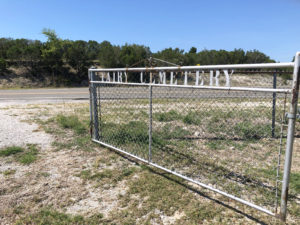
The petite young lady even married twice, once to William Y. Allen in 1892 and again to T. J. Phelps in 1905, but both marriages ended in divorce. Probably not surprisingly, she never had children, but she did live into her 70s and is buried with her parents at…yes…Fairy Cemetery. The sign on the gate alone is enough to back you look twice.
Fairy’s post office closed in 1947, and the school consolidated with Hamilton schools in 1967. A Baptist church, community center, volunteer fire department, a few homes and one historic cemetery are all that endure.
The stories of a petite woman who lived life to the fullest remain with the residents, and those who stop to visit her gated grave.
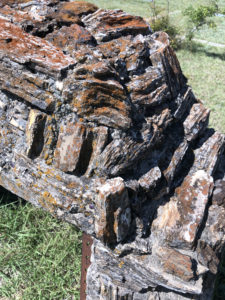 The tiny town’s cemetery is interesting on its own for a variety of style of distinctive, handmade grave markers. Many exhibit expert stone carving skills, but others include one constructed of petrified wood and another meticulously covered with sparkling, local minerals.
The tiny town’s cemetery is interesting on its own for a variety of style of distinctive, handmade grave markers. Many exhibit expert stone carving skills, but others include one constructed of petrified wood and another meticulously covered with sparkling, local minerals.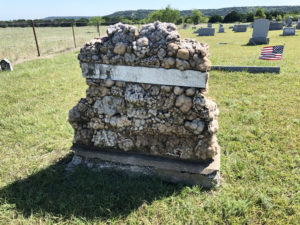
Oh….and if you’re curious what locals are called, they are “Fairians.” How cute is that?
Start Your Own Dia de los Muertos Party Tradition
Texas traditions can originate from almost anywhere in the world, thanks to our diverse history of immigration. It shouldn’t come as any surprise that some of Mexico’s customs have been brought north of the border. The most colorful, and thought by many to be mysterious, celebration is Dia de los Muertos.
This post contains affiliate links. Any purchases made through these links keep this blog running.

When I first approached a group of friends about having a Dia de los Muertos party, they were a bit hesitant. “Isn’t that kind of morbid?” “Isn’t that a celebration of death?”
The simple answer is no – it’s something much more upbeat than you may think.
Luckily, a few of them had seen the Disney Pixar movie “Coco” that familiarized American audiences with the celebration through a powerful story about family, community, tradition and remembrance. Think about Memorial Day, and the concept doesn’t seem so strange.
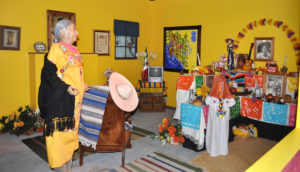
The gist is to celebrate the lives of our ancestors, rather than mourn their passing, by incorporating food, drink and activities they enjoyed in life. Family members create “altars” in their homes with photos of loved ones surrounded by offerings of food, flowers and mementos. Others visit family cemeteries to decorate ancestors’ graves and share stories about their lives. The days of the celebration surround the Catholic “All Souls Day” on November 2. (So it isn’t really a ‘Halloween thing” like many think.)
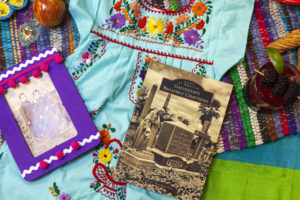
Many of us no longer live in the communities of our ancestors, so circles of friends tend to become our new families. That’s why I thought having our own Dia de los Muertos celebration together would be a fun chance to celebrate all of our families and have some fun and great food at the same time! (Plus, I have some talented friends, so we’re always up for a reason to celebrate together!)
You can easily put together your own party as well.
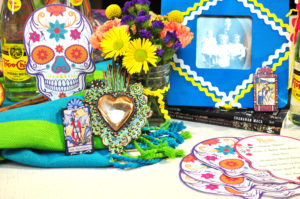 Be sure to incorporate photos of loved ones who’ve passed, and share their stories. It keeps their spirit and your family lore alive.
Be sure to incorporate photos of loved ones who’ve passed, and share their stories. It keeps their spirit and your family lore alive.
I not only included photos of my mother, who we lost last year to Alzheimers, but also made tissue paper flowers for decorations – a craft she taught me as a child.
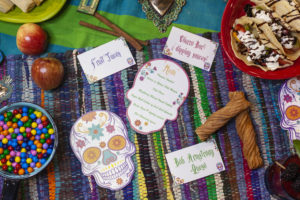
Attention to the smallest details can make a theme like this really come together. The talented Evangeline Event Designs made adorable sugar skull invitations and colorful menu cards, and I found some adorable small decorative accents, as well as a beautiful embroidered skull dishcloth at Hendley Market. The bright Fiestaware plates and platters are from Yesterday’s Best.
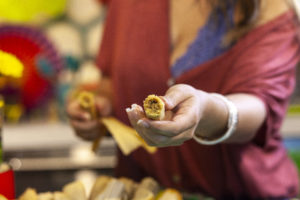
No Mexican theme meal is complete without tamales. We loved these from Pennie’s Tex Mex Takeout.
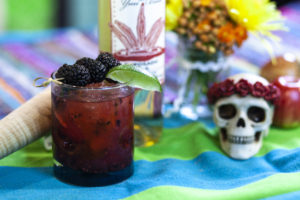
Alicia from The Kitchen Chick made chorizo with apricot sauce, Bob Armstrong queso (from the “Queso!” recipe book she carries in her store), and an amazing Blackberry Mezcal Smash Cocktail.
Our friend Stacy, otherwise known as the Hurried Hostess, made amazing fruit tacos and a churro bar. Yum-ola!
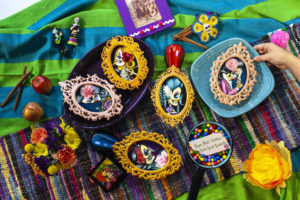
But the item that really had us all gasping in disbelief were the gorgeous cookies created by Jennifer from Good Gosh Ganache. I mean, really…look at these beauties!
Our friends Hailey and Tamara used their styling talents to help our buffet look amazing. Making this event such a group effort made it even more special.
Many communities in Texas offer the opportunity to experience Dia de los Muertos, including San Antonio, Corpus Christi, Victoria and Austin. Check your local community calendar to see if there’s one near you, and celebrate!

